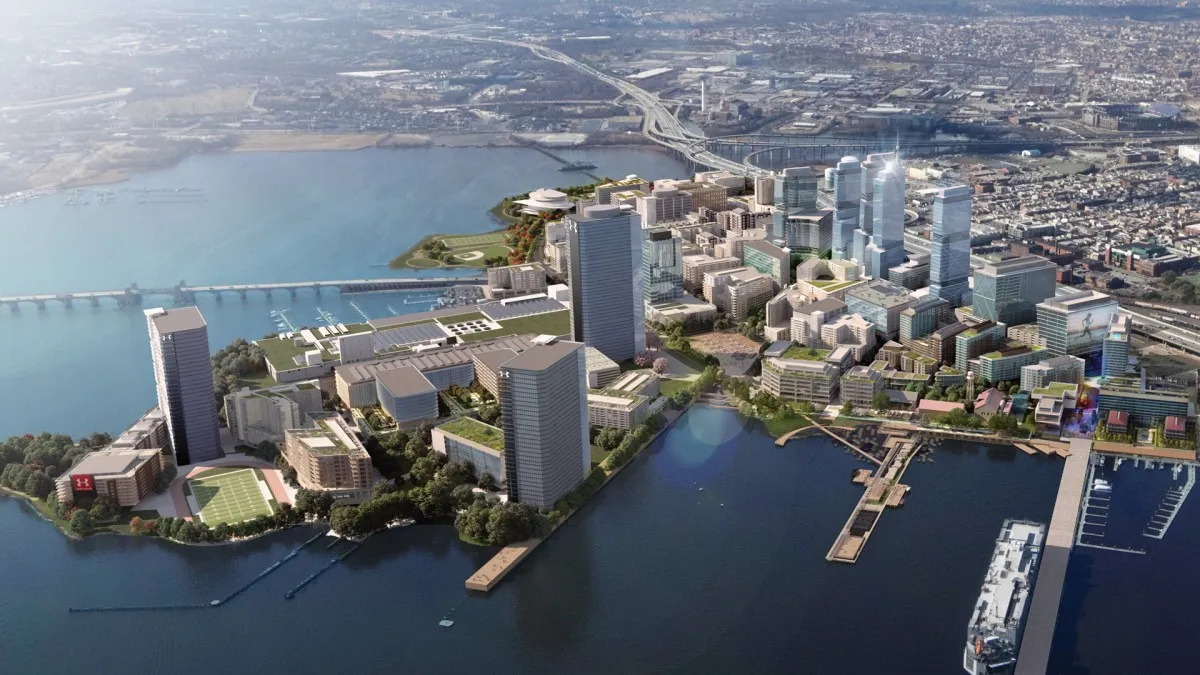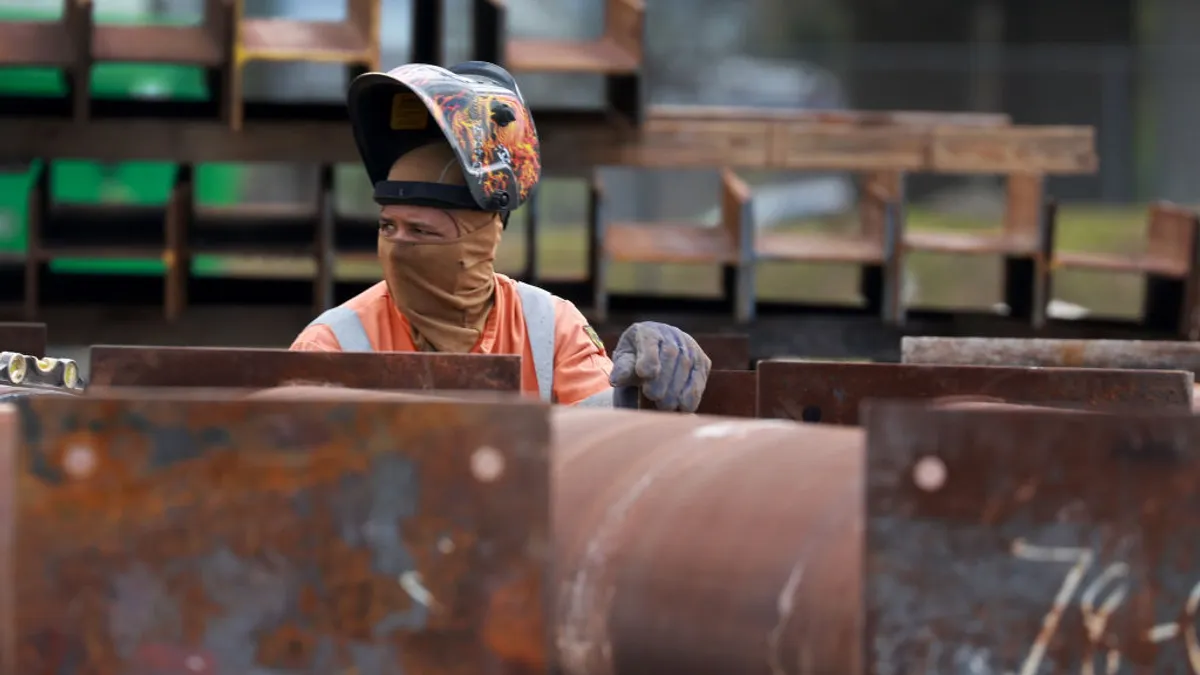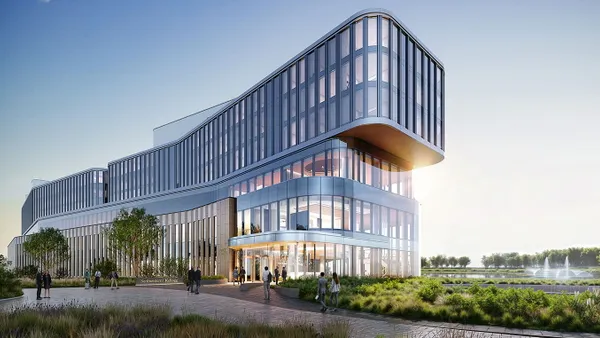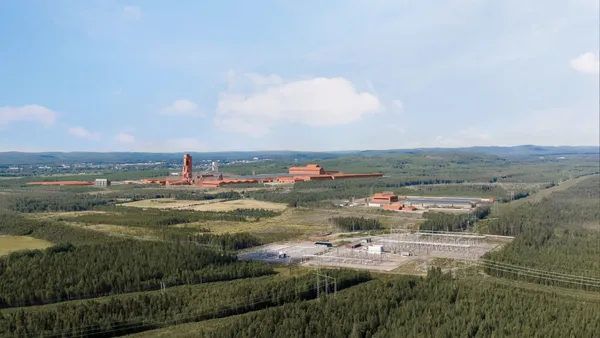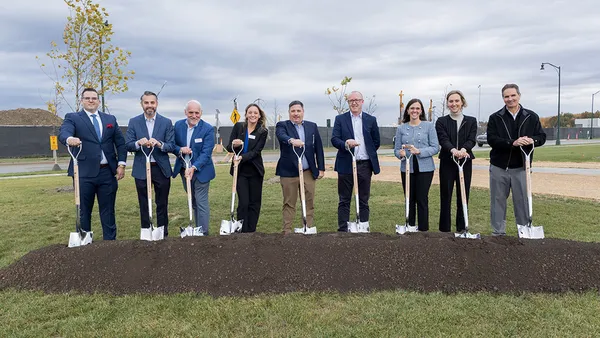Dive Brief:
- Developers of the $5.5 billion Port Covington project in Baltimore have announced plans for a mixed-use phase that will include apartments, a grocery store and office space, according to The Baltimore Sun.
- According to documents on the Port Covington website, Weller Development is looking for an architect to provide design services for a 250-unit residential building with ground-floor retail. The company is specifying an "urban, industrial feel rooted in the historical context of Port Covington and Baltimore." Project officials are also in search of a general contractor to construct five buildings that will include 13,000 square feet of market space, 42,000 square feet of retail and 180,000 square feet of office space. The development, according to the bid request, is intended to be a destination for all Baltimore residents. General contractor proposals were due Aug. 31 and architect proposals for the residential piece were due Sept. 13.
- Developers are still in the permit phase and must also complete water, sewer and road infrastructure before construction can begin. They will pay for infrastructure through the sale of municipal bonds. The market will likely be the first building to break ground, but not until 2020.
Dive Insight:
According to the memorandum of understanding between primary developer Sagamore Development and the city of Baltimore, the bonds that will help pay for the project's estimated $1.4 billion of infrastructure will be supported by future incremental tax revenues generated by the development. The project, which also includes a new Under Armour headquarters and other buildings, is expected to generate more than $5.5 billion in construction expenditures and $9.4 billion in construction-related economic activity; create 54,000 construction and related jobs; and generate $402 million in state and local revenue.
The agreement with the city also requires that the developer hire a certain percentage of minority, disadvantaged and small businesses, including contractors and material suppliers; follow a local hiring and workforce program; and support the development of affordable housing.
Projects of this size that get taxpayer support will most likely include community benefits or workforce training and hiring requirements. For example, in Detroit, contractors working on the Little Caesars Arena were required to hire 51% local workers. Even though some city officials acknowledged that were not enough skilled workers in the area, contractors were still charged more than $5 million in fines for not meeting the 51% benchmark. Most agencies, however, require only that contractors prove they've done their best to find local workers and don't levy a fine if they're truly not available.


